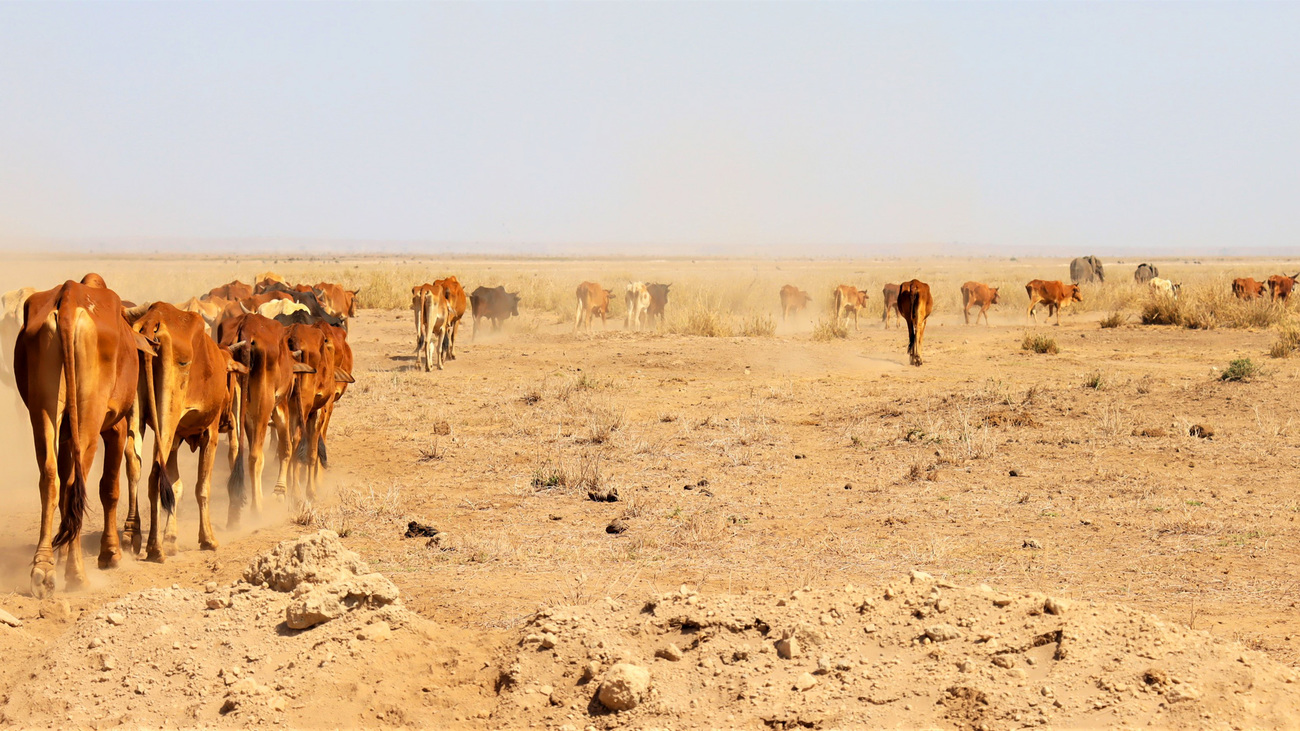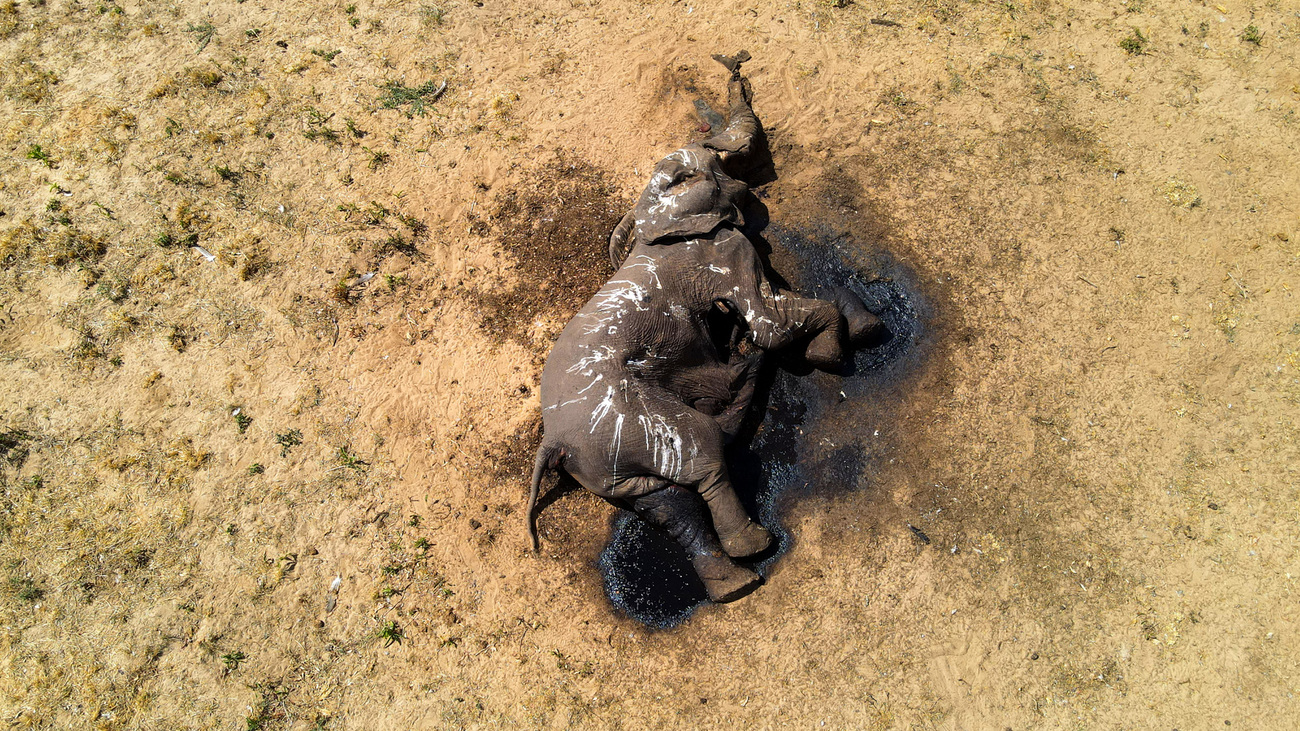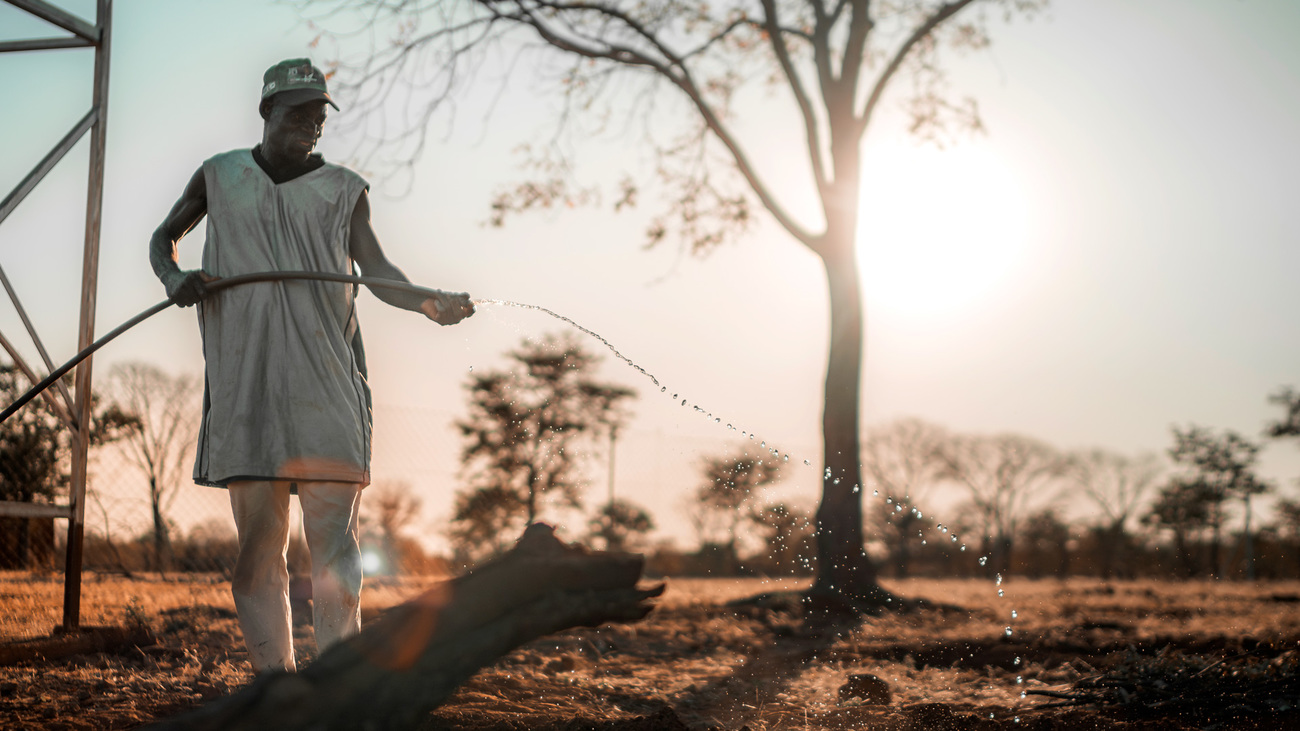Africa on the front lines of climate change
Africa on the front lines of climate change
Written by Peter Borchert, writer and conservationist
Climate change has moved beyond warnings—it is transforming daily life across the globe. Heatwaves are killing hundreds of thousands, crops are failing, seas are rising, and ecosystems are shifting before our eyes. Africa, which has contributed least to global emissions, is warming faster than the global average and suffering serious consequences for both people and wildlife. Yet powerful solutions exist. A smarter, fairer transition can still protect communities, safeguard nature, and pull temperatures back to safer levels.
A crisis in real time
Climate change is no longer a distant concern discussed in scientific circles or diplomatic halls—it is reshaping the world in real time. Glaciers are melting, storms intensifying, rivers drying, food systems faltering, and both people and wildlife are being forced to adapt to new realities.

In the lead-up to the United Nations Climate Change Conference (COP30) in Brazil, UN Secretary-General António Guterres delivered one of his starkest warnings yet. Humanity, he said, has missed the chance to keep global warming within the 1.5°C limit set by the Paris Agreement. An overshoot is now “inevitable”, with “devastating consequences”, especially if emissions continue to rise.
But Guterres urged the world not to give up. He told The Guardian (28 October 2025):
“Let’s recognise our failure … we have failed to avoid an overshooting above 1.5 °C in the next few years. And that going above 1.5 °C has devastating consequences. Some of these devastating consequences are tipping-points, be it in the Amazon, be it in Greenland, or western Antarctica, or the coral reefs.”
Even so, he said, if emissions fall sharply and immediately, temperatures could still return to safer levels later this century. The window is narrowing—but it has not yet closed. Guterres called for a shift from rhetoric to reality: accelerated cuts in fossil fuel use, a just and fair transition for workers and industries, and far greater support for vulnerable countries already suffering the worst impacts. He also pressed for stronger representation of Indigenous peoples in climate negotiations, calling them “the best guardians of nature.”
The science is undeniable
The Intergovernmental Panel on Climate Change (IPCC) reports that global carbon dioxide levels reached record highs in 2024. Without rapid reductions, the world faces more intense heatwaves, floods, and droughts—alongside sea-level rise, food and water insecurity, and widespread ecosystem disruption. Choices made in the next decade will shape life for generations to come.
For people, the effects are already measurable and deadly. The Lancet Countdown reports that rising heat now kills roughly one person every minute worldwide. Between 2012 and 2021, heat-related deaths averaged around 546,000 per year—a 23% percent increase since the 1990s. The health burden is deeply linked to fossil fuel use, which drives warming, worsens air pollution, and increases wildfire and disease risks.
The economic losses are equally staggering. In 2024 alone, extreme heat caused 639 billion lost labour hours globally, hitting outdoor and low-income workers hardest. Despite these realities, governments continued to subsidise fossil fuels at about US$ 956 billion in 2023, while leading oil companies planned production levels incompatible with the 1.5°C target.
Nature’s warning signs
The natural world is changing in subtle but profound ways. In Iceland, scientists recently recorded mosquitoes for the first time in history—three specimens of Culiseta annulata—a discovery unimaginable a generation ago. The Arctic region, including Iceland, is warming nearly four times faster than the global average, allowing insects that once could not survive the winters to establish themselves.
Such biological signals reveal how fast ecosystems are shifting. As temperatures rise, new species—including disease carriers—spread into regions once too cold to sustain them, altering ecological balance and posing new risks to people, wildlife, and agriculture.
Africa on the frontlines
Nowhere are the consequences more visible than in Africa—a continent warming faster than the global average despite contributing least to the crisis. Millions of people face prolonged droughts, crop failures, heatwaves, and floods. Rising seas threaten coastlines and infrastructure. In the Horn of Africa, more than a million people were displaced in just six months due to drought and climate-driven conflict.
The IPCC warns of multiple, compounding risks: shrinking food production, greater flood damage, increased heat-related illness, and reduced labour productivity, particularly in agriculture. Limited economic resources and existing poverty make adaptation harder.
Yet there is reason for hope. Africa’s coordinated response to COVID-19 proved that collective action and strong leadership can protect lives and build resilience. That same spirit, directed toward climate action, can safeguard communities and ecosystems alike.

Wildlife under pressure
Wildlife, too, is facing growing climate pressure. Africa’s elephants—keystone species vital to the health of savannah and forest ecosystems—are among the most vulnerable to climate extremes.
For over two decades, the Conservation Ecology Research Unit (CERU) at the University of Pretoria, supported by IFAW, has studied elephant behaviour, movement, and ecology across southern Africa. Their research shows that climate change is forcing elephants to adapt: altering daily routines, migration routes, and access to water.
Water is the key to elephant survival. As temperatures rise and water sources dry, elephants must travel farther, rest more, and become more active at night. These adaptations have limits—especially where human activity blocks movement or competition for water increases. Young elephants are particularly at risk; in places like Amboseli and Kruger, drought years have caused high calf mortality. When rainfall drops, breeding declines, and even resilient populations begin to struggle.
Room to Roam: a vision for climate resilience
CERU’s research provides the scientific foundation for Room to Roam, IFAW’s vision for climate-resilient landscapes where people and wildlife can thrive together. Instead of managing elephants in isolated, fenced areas, Room to Roam connects habitats across countries, restores degraded land, secures wildlife corridors, and works with communities to reduce conflict.
By protecting and regenerating ecosystems, the initiative safeguards carbon stores, captures additional carbon, and strengthens biodiversity. At the same time, it helps people adopt climate-smart livelihoods—such as regenerative farming, agroforestry, beekeeping, and improved livestock management. These approaches restore soil health, improve food security, and reduce pressure on wildlife and natural resources.

Turning knowledge into action
Across the world, encouraging signs of progress are emerging. Solar and wind power are now cheaper than fossil fuels in many regions, helping countries retire coal plants and expand renewables. Nature-based solutions—like restoring forests, wetlands, and mangroves—are absorbing carbon, preventing floods, and sheltering biodiversity. Cities are redesigning transport, improving energy efficiency, and creating green spaces to reduce heat stress and pollution.
Finance is shifting, too. Green investments are becoming mainstream, and global partnerships are helping vulnerable communities adapt through early-warning systems, drought-resistant crops, and improved water management.
Hope through collective action
Climate change is the defining challenge of our time—but it is one we can still meet. The science is clear. The technology exists. Communities across the world, including throughout Africa, are already building resilient, nature-positive futures.
With stronger policies, determined leadership, and long-term investment, we can limit the damage, protect wildlife, and create a safer, healthier planet for generations to come.
Related content
Our work can’t get done without you. Please give what you can to help animals thrive.